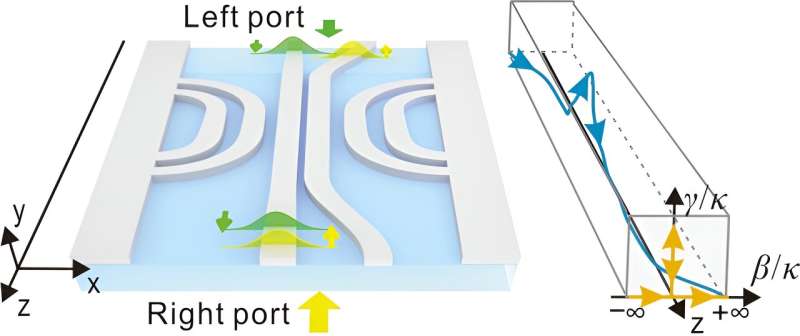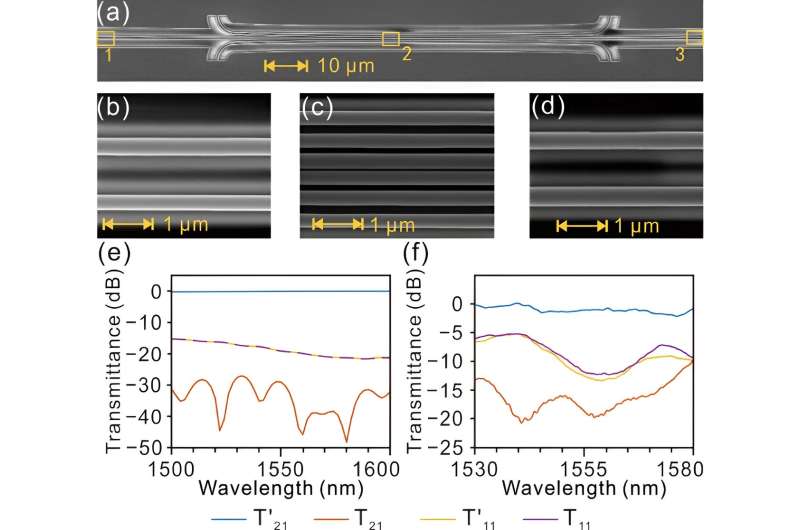This article has been reviewed according to Science X's editorial process and policies. Editors have highlighted the following attributes while ensuring the content's credibility:
fact-checked
trusted source
proofread
Chiral transmission by an open evolution trajectory in a non-Hermitian system

In non-Hermitian systems, two or more eigenvalues and eigenstates of a resonant system coalesce at Exceptional points (EPs). Dynamic encircling of EPs has received significant interest in recent years, as it leads to highly nontrivial phenomena, such as chiral transmission, in which the final state of the system depends on the encircling handedness.
Previously, chiral transmission for a pair of eigenmodes has been realized by a closed dynamical trajectory in parity-time- (PT-) or anti-PT-symmetric systems. Although chiral transmission of symmetry-broken modes is more accessible in practical photonic integrated circuits, the demonstrated transmission efficiency is very low due to path-dependent losses.
In a new paper published in Light: Science & Applications, a team of scientists led by Professor Lin Chen from Wuhan National Laboratory for Optoelectronics and School of Optical and Electronic Information, Huazhong University of Science and Technology, Wuhan 430074, China, and co-workers have reported chiral conversion between modes localized in individual waveguides.
Beyond the previously closed EP-encircling evolution trajectory, an open evolution trajectory is explored, taking advantage of asymptotic modes at two different infinite points but not (anti-) symmetrical modes (PT-symmetric systems) or symmetry-broken modes (anti-PT-symmetric systems).
In such a dynamical non-Hermitian system, non-adiabatic jumps (NAJs)—the key factor for inducing a chiral response—originate from coupling loss selectively to one of the eigenmodes during the evolution.
The chiral dynamics are theoretically and experimentally demonstrated. The resultant chiral mode converters based on coupled silicon waveguides can localize optical energy within a single waveguide with high-efficiency transmission.

The chiral mode converters based on open evolution trajectories introduce loss by an adiabatic coupler instead of metal applied in previous schemes, which relaxes the fabrication requirements.
The results offer a new approach to studying chiral dynamics in non-Hermitian systems and open new avenues for the development of practical asymmetric-transmission devices and applications.
More information: Xiaoqian Shu et al, Chiral transmission by an open evolution trajectory in a non-Hermitian system, Light: Science & Applications (2024). DOI: 10.1038/s41377-024-01409-1
Provided by Chinese Academy of Sciences




















